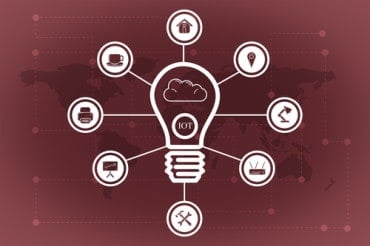
The goal of initiatives like “IoT for Good” is to steer the world toward a path that makes life better for the generations that stand to inherit this planet.
As technology continues to play a larger role in our lives, it only makes sense that it will play a larger role in the world at large. From keeping our water clean to feeding our growing population and keeping them healthy, there’s plenty of work to be done in terms of solving large-scale global issues. Enter “IoT for Good,” the application of Internet of Things (IoT) technologies to improve social, economic, and environmental issues. “IoT for Good” leverages innovations in IoT, such as eSIM and connectivity, to enable us to live greener and longer, all while making informed, intelligent use of our global resources.
It’s essential to understand CH solutions, such as telehealth, are designed to complement existing clinical staff rather than replace them. This is especially critical given the global shortage of healthcare professionals, exacerbated by factors like budget constraints and the ripple effects of the pandemic. Vulnerable populations, including seniors and those in remote areas who already face obstacles when it comes to accessing healthcare services, are particularly affected by these shortages.
See also: IoT in InsurTech: Revolution of the Insurance Industry
IoT for Good Examples
One notable example of “IoT for Good” in healthcare is GrandPad, a user-friendly communication device that connects seniors with caregivers, family members, and emergency services with just a touch of a button. By facilitating remote communication and care coordination, GrandPad helps seniors maintain their independence while providing peace of mind to their loved ones.
Similarly, Remote Patient Monitoring (RPM) solutions utilize reliable IoT connectivity to measure patient vitals remotely, often from the comfort of their own home. RPM devices then transmit life-saving data to clinicians in real time, allowing them to monitor multiple patients simultaneously. Instead of waiting for a patient to call and complain of chest pain, imagine their blood pressure taken and analyzed instantly, with EMS automatically dispatched if needed. This not only reduces the burden on hospitals and doctors’ offices but also addresses the growing need for senior care as life expectancy increases.
So no, your nurse won’t be a cyborg, and your family doctor isn’t going anywhere; however, the ways people can access medical care are expanding due to CH innovations, which can improve patient outcomes and the overall quality of care – and the timing could not be better.
However, “IoT for Good” extends beyond patient care to address broader public health challenges. Research published in the Annual Review of Public Health highlights the disparity in life expectancy and health status between rural and remote populations compared to their urban counterparts. One of the primary challenges is increasing vaccine accessibility and overcoming logistical hurdles in delivering medical supplies to remote areas.
Recognizing this issue, Swoop Aero has made it their mission to narrow the gap in healthcare access for remote communities by delivering essential medical supplies regardless of location. Guided by their vision of creating seamless supply chains that foster emotional and economic well-being in communities, the company uses drones as the optimal solution to address transportation challenges such as traffic congestion, long distances, terrain obstacles, and limited data connectivity in remote regions.
The company, in partnership with its IoT partner, implements a nimble and holistic strategy through satellite connectivity with cellular redundancy enabled via eSIM technology with zero-touch provisioning. Equipping a piece of equipment – in this case, a drone – with multi-modal, multi-carrier technology through a single SIM allows drone flights to seamlessly switch between connectivity technologies to stay in the air.
This solution ensures the dependable transportation of medical essentials, including pathology samples, diagnostic kits, antiretroviral therapy medication, and vitamins, across regions like Malawi, the Democratic Republic of Congo, Mozambique, as well as Australia, the United Kingdom, and the Pacific. By collaborating with their respective Ministries of Health, Swoop Aero actively supported efforts to deliver vital medical supplies to underserved and hard-to-reach areas.
According to Red Lightning, a nonprofit organization leveraging subject matter experts and innovative technology to solve disaster aid and medical equity problems, Swoop Aero drones delivered a total of 6,936 vaccine doses to aid in the fight against tuberculosis, poliovirus, diphtheria, tetanus, pertussis, Hib, hepatitis B, and other diseases. The nonprofit also states the number of inoculations flown in the first two days alone was enough to supply recipient communities for a month, marking a major advance in medical distribution and access to treatment in distant areas of Ethiopia.
“IoT for Good” also extends to food production, which will be an even more pressing global issue in the years to come. According to a report by Business Insider, the United Nations projects the global population will likely reach 9.7 billion by 2050, necessitating a 69 percent increase in global agricultural production between 2010 and 2050. To address this growing demand, smart agriculture – a burgeoning approach to farm management – harnesses modern technologies such as IoT to bolster product quantity and quality.
BinSentry, an agricultural tech firm, is at the forefront of this movement, developing an innovative IoT solution tailored to feed mills and livestock producers. This technology facilitates efficient on-farm inventory monitoring, resulting in significant operational improvements and cost savings for both farmers and consumers. BinSentry has pioneered a feed ordering automation system facilitated by IoT-connected sensors inside feed bins and silos that periodically gauge feed levels. Subsequently, the collected data is transmitted via cellular connectivity to the cloud, where it can be accessed and monitored through a dashboard, saving time and money for farmers while helping them sustainably increase their food production.
BinSentry, with the help of innovative eSIM technology and reliable IoT connectivity, was able to make great strides in helping mankind meet one of its biggest needs – eating.
IoT technology is also at the forefront of sustainability by saving one of the world’s most important, yet at-risk, natural resources: water. GroundWorx is a company specializing in wireless advancements and water preservation. With two-thirds of the world expected to face water shortage by 2025, GroundWorx’s technology plays an important role in simplifying and streamlining the technology needed to conserve water.
GroundWorx offers a streamlined, potent water management solution tailored for agricultural and recreational purposes. Through real-time monitoring of soil conditions, GroundWorx equips users with data-driven insights to optimize watering practices. When this technology is implemented properly, industries like agriculture, turf management, hotels and resorts, schools and universities, and government services (municipal parks, smart communities, and cities, etc.) can increase sustainability in water management, significantly reduce costs, and increase workforce productivity.
GroundWorx leverages IoT connectivity to craft solutions with the potential to help manage global water supply through times of drought and crisis. For instance, two California examples, an avocado farm and a golf course resort, were able to save millions of gallons of water and hundreds of thousands of dollars by implementing the IoT solution.
A Final Word on IoT for Good
Our world will continue to evolve long after the digital transformation has taken place, just as it did long before said transformation began. The goal of initiatives like “IoT for Good” is to steer this evolution toward a path that makes life better for the generations that stand to inherit this planet, while creating a legacy of caring innovation for the current generations.




























